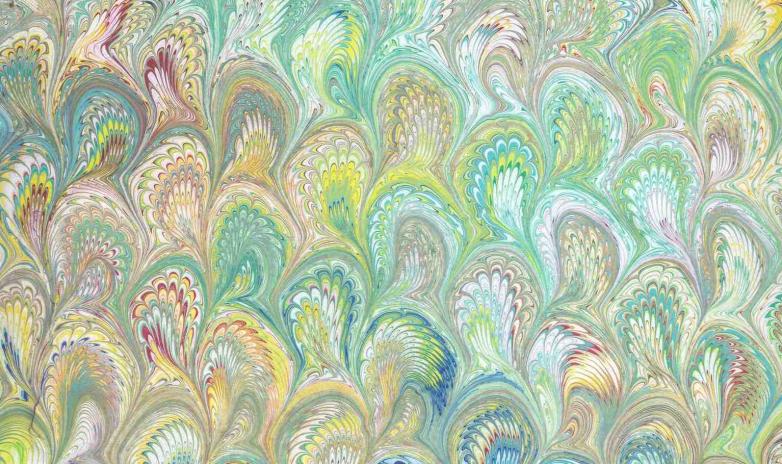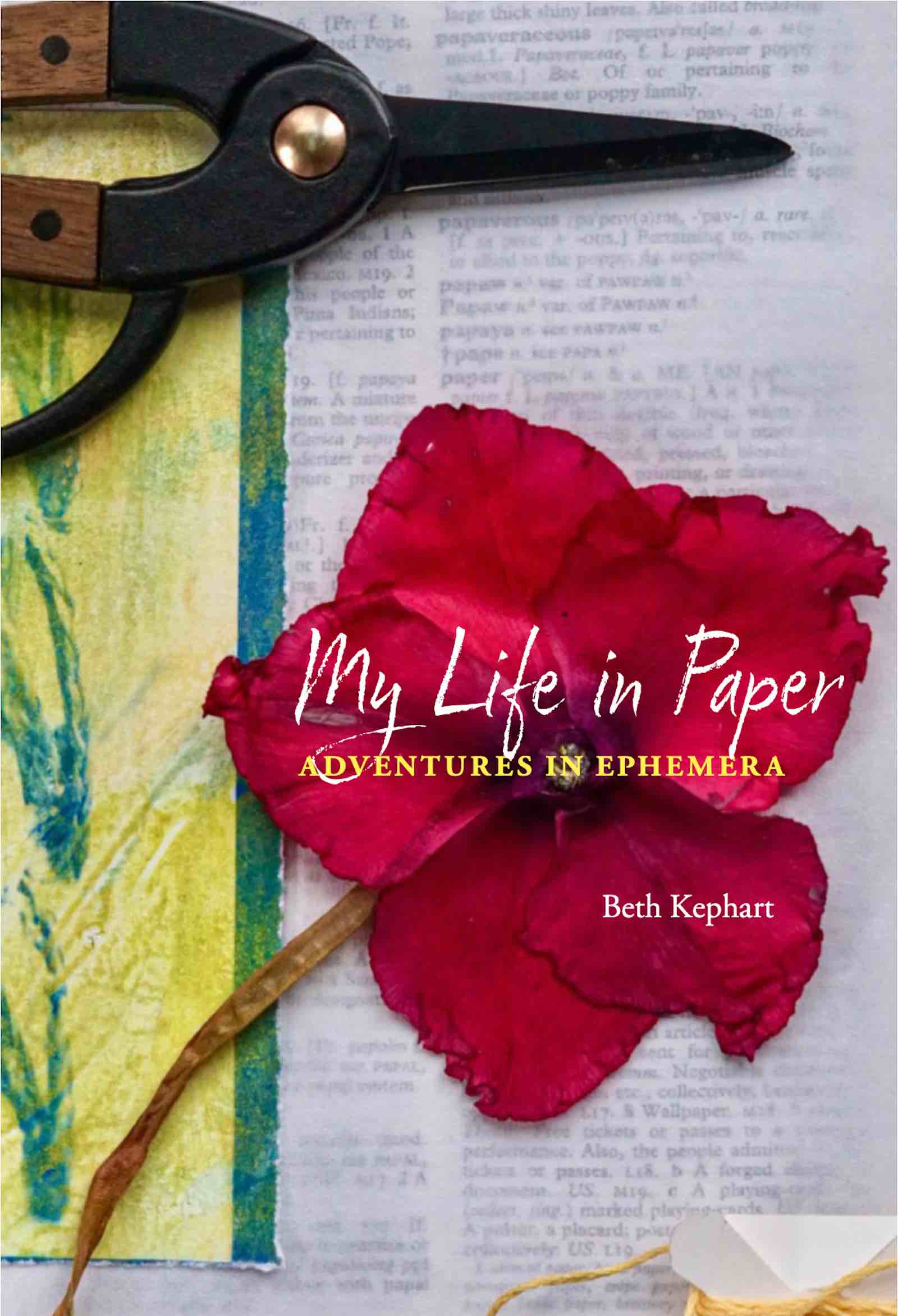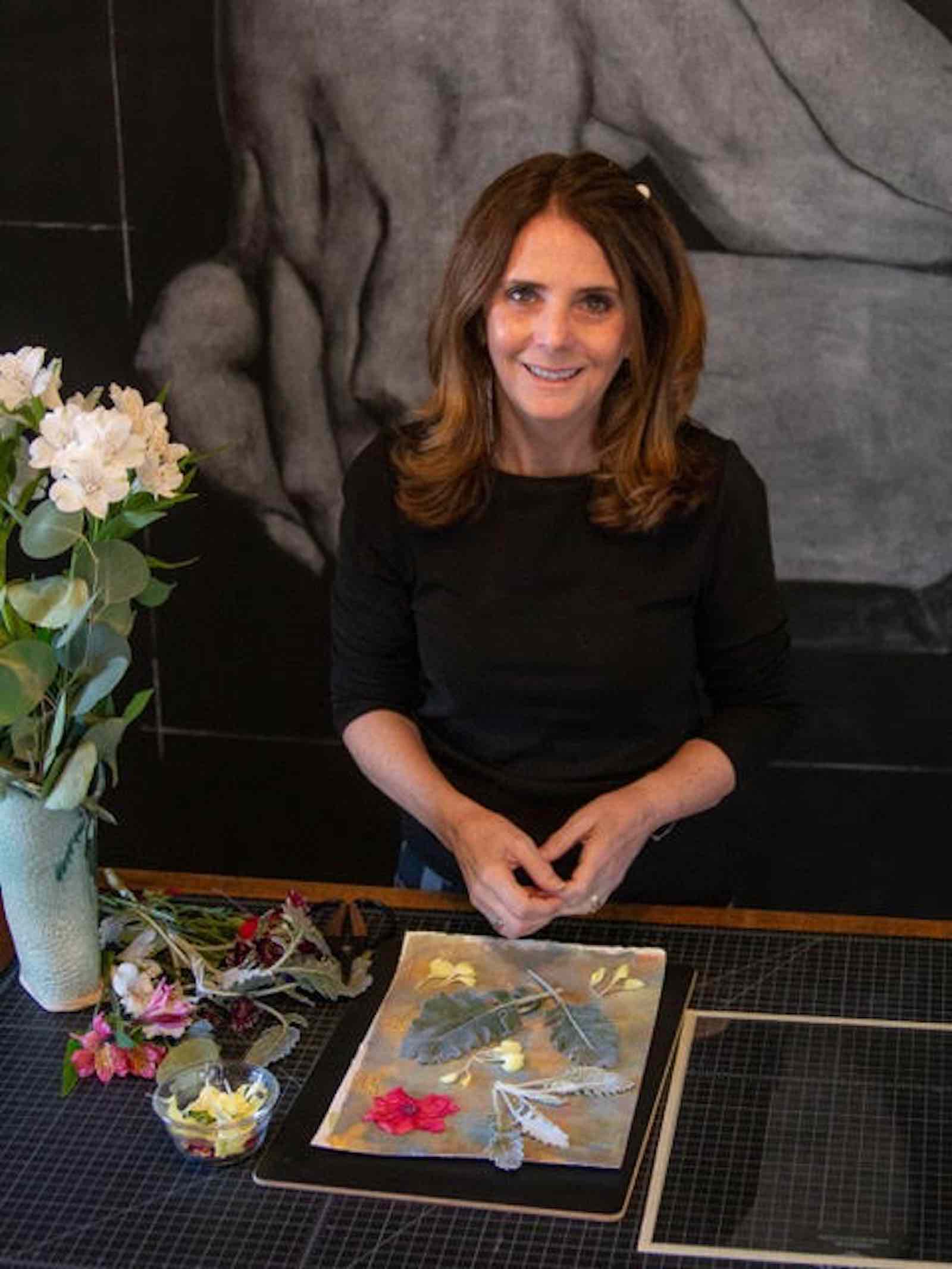I’d been messing with paper for a few years before I encountered, thanks to a gift my brother gave me, the great handmade paper scholar and crafter Dard Hunter. My sudden obsession with Hunter led me to The Life Work of Dard Hunter, a book compiled by Hunter’s son and grandson (both named Dard), which includes, among many things, the images of the marbled papers Hunter made while studying in Vienna. The more work I do as an amateur marbler, the more respect I have for the shapes Hunter urged from his trays of color. Flower shapes. Lightning strikes. A continuum of wings.
My own endpapers are paisley patterned and zig-zagged. They can look (to me) like astronomical systems and, sometimes, like a single solitary planet. Given the privilege of designing both the cover and the endpapers for my new book, My Life in Paper: Adventures in Ephemera (a title that gives a deliberate nod to Hunter), I was keen on creating a density of color and pattern, something vivid and (I hoped) so enticing that readers would not simply rush past the endpapers on their way to the table of contents, but remain with them, or return to them, so that they might see, in the art itself, a foreshadowing of the story to come.
For like the marbling, My Life in Paper is built of swirls and recurrences, saturations and retreats, intensities and urgencies that echo and recur. The endpapers anticipate. The endpapers pause. The endpapers, if you listen to them, whisper.




















